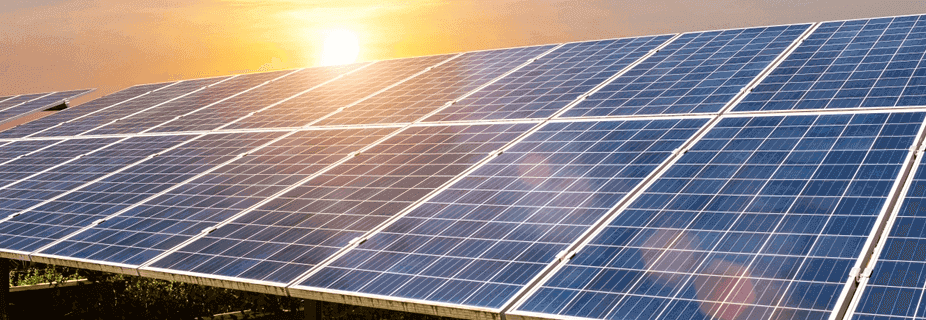KEY POINTS
- With net metering, the electricity that your solar panels generate is used in your home first, with the excess going to the grid.
- With gross metering, all of your solar generation is exported to the grid in exchange for a payment or feed-in tariff.
- For those moving to net metering in Victoria or Queensland, you may be able to upgrade your meter for free.
As more Australians look to solar as a way to save money and reduce their carbon footprint, it’s more important than ever to understand the solar industry’s lingo. In particular, you’ll want to understand the difference between net metering vs gross metering. In this article, we’ll explore what solar net metering is, how it works, and why it can be beneficial for homeowners.
On this page, you’ll find:
What is net metering?
In short, net metering is a process where the solar power you generate is first used to power your home and any excess electricity gets fed into the grid in exchange for a credit from your electricity provider.
This process is made possible with a device called a net meter that separately measures the energy you import and export. This way, your retailer can charge you the retail price for the energy you pull from the grid, and apply the correct feed-in tariff for the energy you export.
How does solar net metering work?
In Australia, solar net metering is regulated differently depending on your state or territory. However, the concept remains the same. When the homeowner generates more electricity than they need, it flows back to the grid and is measured by a two-way electricity net meter (not to be confused with a smart meter).
The excess electricity is then credited against future electricity use. Most energy retailers offer a feed-in tariff, which is a fixed price paid to homeowners for each kilowatt hour (kWh) of excess electricity that is exported to the grid.
For Queensland and Victorian residents, the cost of installing a net meter is included in the cost of your solar panel installation, while those in other states may need to pay for a meter upgrade.
Net metering vs gross metering
There are two ways to measure solar power in Australia — net metering and gross metering. Gross metering means that all the electricity your solar panels generate is fed back into the power grid, typically in exchange for a feed-in tariff. This is in contrast to net metering, where only the excess energy produced is sent back to the grid.
With gross metering, you earn a fixed rate for every kWh you export, and pay the retail price for the total amount of energy you use, regardless of the power your solar system produces.
While this may work for some, it’s important to consider the price you pay for electricity and the feed-in tariffs available to decide if gross metering will actually benefit you. Generally speaking, if the price of energy is more than you’d make back in solar credits, net metering is the way to go. However, you should first talk to your solar installer about whether gross or net metering is the best option for your specific circumstances.
Advertisement
Related content:
Other types of net metering in Australia
Aside from the standard net metering offers for those with solar panels, there are a few other types available.
Virtual net metering
This is a process designed primarily for those who don’t have a solar system installed on their property. This enables households to subscribe to a shared solar panel site, allowing each household to receive a share of the energy supply without owning solar panels.
The electricity generated goes back into the power grid, and the customer gets a credit to their electricity bill relative to the size of their share. This option allows you to have solar even if you are unable to install the solar panel system on your property.
Aggregate net metering
This approach works differently from virtual net metering, as it is primarily for apartment buildings. The tenants will subscribe to a shared solar panel site in the same way they would in virtual net metering, but the energy produced would go to all the tenants in the property before going back to the power grid.
This option is excellent for those who cannot install solar panel systems on their property but would like to share solar energy with other tenants in their building.
Remote net metering
This type of system is primarily for commercial customers, like farmers, companies and organisations. Remote net metering allows distant solar panel systems to export electricity they cannot use. Instead of wasting unused energy, it is sent through the power grid to aid in the reduction of energy bills.
This approach has become very popular for businesses, as it can significantly reduce their electricity bills.
Net metering and electricity bill savings
It’s no secret that Aussie power prices have been consistently rising, which is where a net meter can help cut costs. By generating your own electricity during the day and selling any excess to the grid, you can offset the cost of the energy you use at night.
Again, no two situations are the same so it’s worth consulting a licensed solar installer about your options. Regulations and policies vary depending on where you live, which is why it’s best to discuss your situation with a professional.
Compare solar energy plans
Some energy providers will offer specific electricity plans to customers with solar panels that come with a higher feed-in tariff than other market offers. Below are some of the solar energy plans available in New South Wales, Victoria, Queensland and South Australia.
Here are some of the cheapest solar-specific deals from the retailers on our database. These costs are based on the Ausgrid network in Sydney but prices will vary depending on your circumstances. We show one product per retailer, listed in order of lowest price first. Annual price estimates assume general energy usage of 3900kWh/year for a residential customer on a single rate tariff. Price estimates exclude solar feed-in tariff credits. These are products from referral partners†. Our database may not cover all deals in your area, and please check retailer websites for up to date information.
Here are some of the cheapest solar-specific deals from the retailers on our database. These costs are based on the Citipower network in Melbourne but prices will vary depending on your circumstances. We show one product per retailer, listed in order of lowest price first. Annual price estimates assume general energy usage of 4000kWh/year for a residential customer on a single rate tariff. Price estimates exclude solar feed-in tariff credits. These are products from referral partners†. Our database may not cover all deals in your area, and please check retailer websites for up to date information.
Here are some of the cheapest solar-specific deals from the retailers on our database. These costs are based on the Energex network in Brisbane but prices will vary depending on your circumstances. We show one product per retailer, listed in order of lowest price first. Annual price estimates assume general energy usage of 4600kWh/year for a residential customer on a single rate tariff. Price estimates exclude solar feed-in tariff credits. These are products from referral partners†. Our database may not cover all deals in your area, and please check retailer websites for up to date information.
Here are some of the cheapest solar-specific deals from the retailers on our database. These costs are based on SA Power network in Adelaide but prices will vary depending on your circumstances. We show one product per retailer, listed in order of lowest price first. Annual price estimates assume general energy usage of 4000kWh/year for a residential customer on a single rate tariff. Price estimates exclude solar feed-in tariff credits. These are products from referral partners†. Our database may not cover all deals in your area, and please check retailer websites for up to date information.
How do I switch to net metering?
Switching to net metering might require a meter upgrade if your current meter is a basic accumulation meter that only tracks total usage, not real-time consumption. You’ll instead require a net meter that tracks your energy use by the minute. This lets you see when you use the most power and allows you to use more of your solar energy.
Contact your electricity provider to find out if they offer net metering and free upgrades (be aware there might be hidden costs). Some smart meters can even be switched remotely for net metering. Don’t hesitate to compare different providers’ deals to find the best option for you.
Is net metering worth it?
While there are some considerable benefits to net metering, whether it’s worth it will depend on your own personal circumstances. With that said, a good rule of thumb to follow is if your electricity rates are higher than the feed-in tariffs available, you’re probably better off using your solar power in your home instead of selling it all to the grid.
However, it’s important to consider the cons too; if you’re installing a net meter outside Queensland or Victoria, you will most likely have to pay an upfront meter upgrade fee before you can start net metering your solar power. We highly encourage customers to calculate the payback period required to cover any upfront installation costs.
To complicate things further, if you’re on a net meter, your energy bill will not measure the volume of self-consumed solar energy or the savings generated from it. Customers must calculate the true value of their solar savings themselves, which can be achieved by following the steps listed below:
- Install a current transformer to your net meter to measure the total amount of solar energy generated in kWh, which measures the amount of solar energy generated. E.g. 2,000kWh (solar energy generated)
- Subtract the exported solar energy (as listed in your electricity bill) from the total amount of solar energy generated from step one — the final sum represents the amount of self-consumed solar energy. E.g. 2,000 kWh (solar energy generated) – 1,500 kWh exported solar energy) = 500kWh (self-consumed solar energy)
- Multiply the amount of self-consumed solar energy from step two by the relevant usage charges in c/kWh — this is dependent on your tariff type (e.g. time of use or single-rate). E.g. 500kWh X 31c/kWh (single rate tariff) = $155 (self-consumed solar energy savings)
- Add the exported energy savings (as listed in your electricity bill) to the self-consumed solar energy savings from step three to determine the true value of your solar savings. E.g. $155 (self-consumed solar energy savings) + $100 (exported solar energy savings) = $255 (the true value of solar savings)
So, is it worth it? The answer will always depend on your individual circumstances, but with the potential for long-term savings and positive environmental impact, it’s definitely worth investigating further.
Original reporting by Tara Donnelly
Image Source: Porstocker/shutterstock.com




Share this article